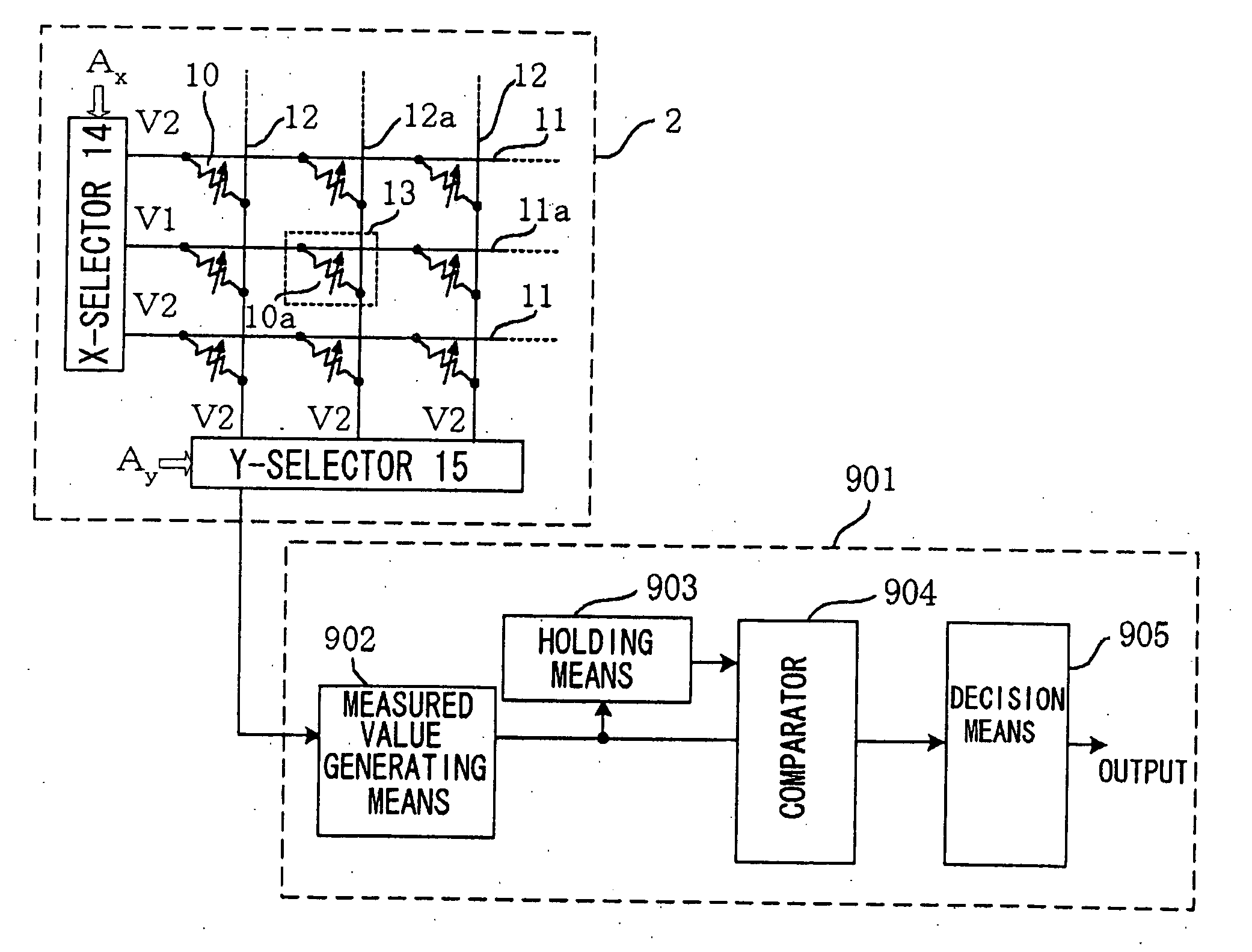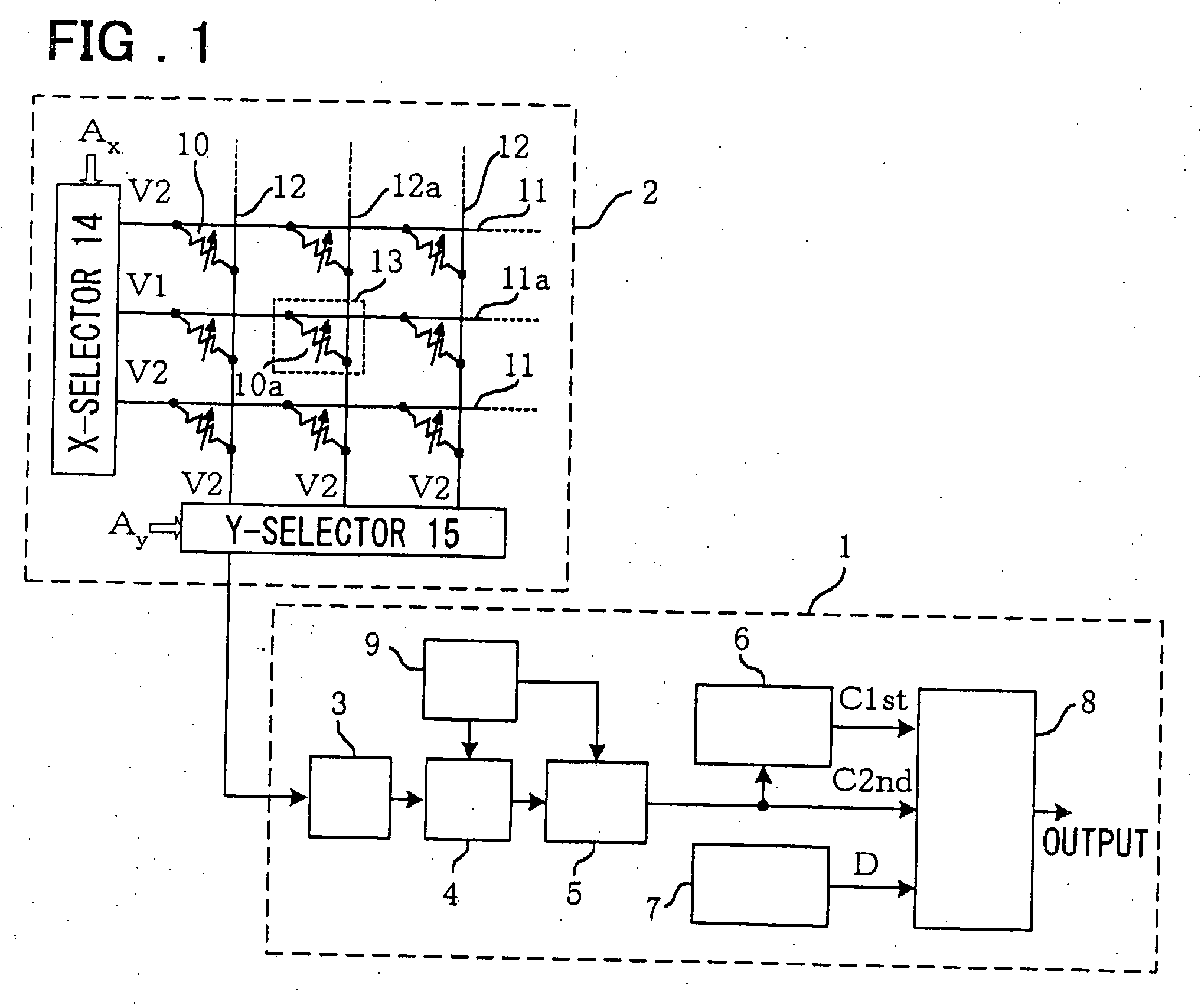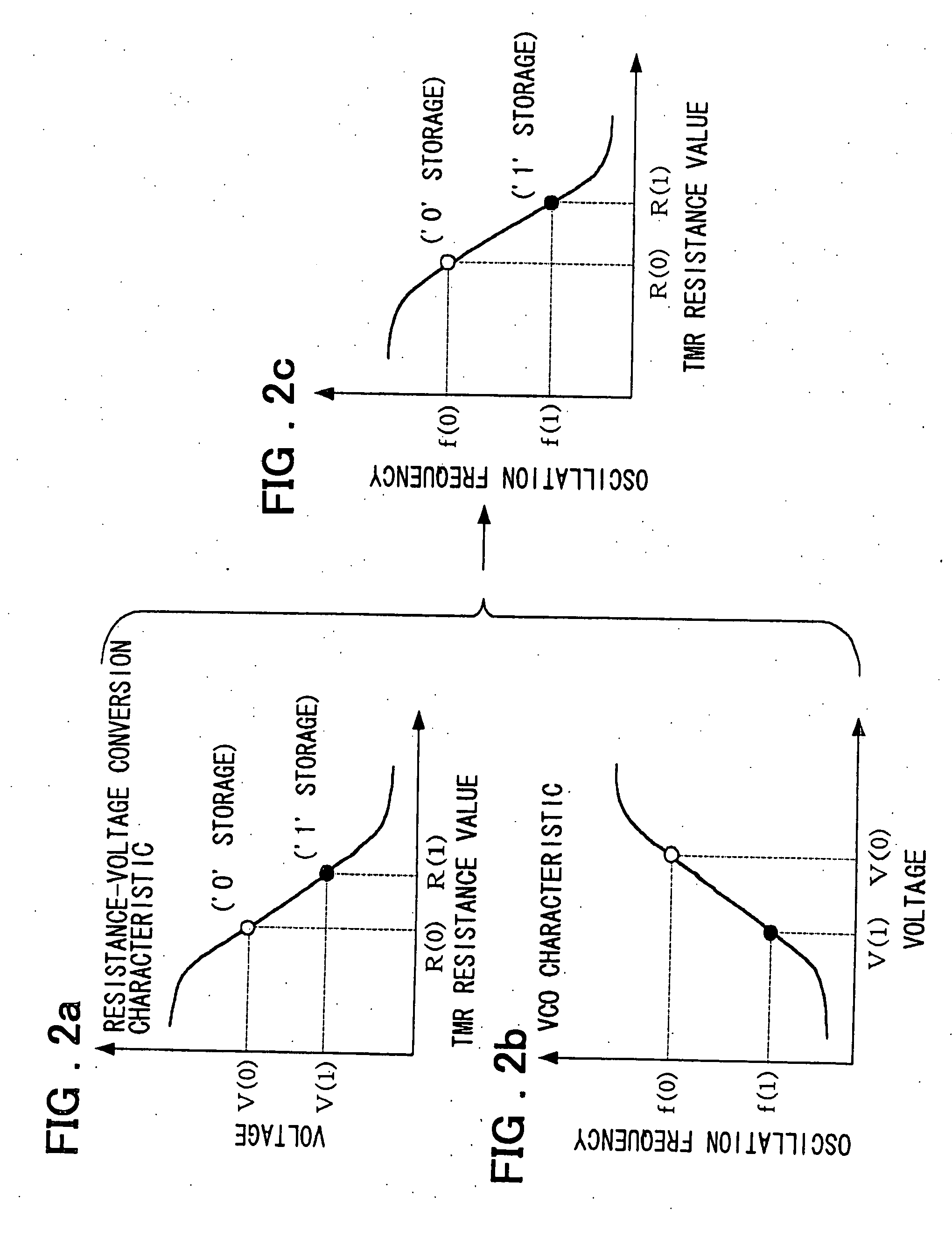Readout circuit for semiconductor storage device
a semiconductor storage device and readout circuit technology, applied in semiconductor devices, digital storage, instruments, etc., can solve the problems of increasing circuit area, deteriorating cell yield, and difficult to generate uniform insulating film, so as to reduce device area and power consumption, prevent the production yield from being lowered, and high-speed readout
- Summary
- Abstract
- Description
- Claims
- Application Information
AI Technical Summary
Benefits of technology
Problems solved by technology
Method used
Image
Examples
embodiments
[0051] By referring to the drawings, preferred embodiments of the present invention will be explained in detail.
first embodiment
[0052]FIG. 1 depicts a block circuit diagram of an MRAM used in a first embodiment of the present invention. Referring to FIG. 1, the MRAM of the present embodiment includes a memory cell array 2 and a readout circuit 1. The memory cell array 2 is the same as that explained with reference to FIG. 26 and hence is not explained here. Only the current flowing through the TMR 10a is supplied to the readout circuit 1. This readout circuit 1 includes a preamplifier 3 for converting the current flowing through the TMR of the selected cell into the voltage in an amplifying fashion, a VCO (voltage-controlled oscillator) 4 for oscillating at a frequency proportionate to the output voltage of the preamplifier 3, a counter 5 for counting the number of pulses of the VCO 4 during an optional period, a readout value register 6 for storage of an output value of the counter 5, a reference value register 7 for pre-storage of a reference decision value, a decision means 8 for verifying the storage sta...
second embodiment
[0063]FIG. 7 depicts a block circuit diagram of a readout circuit of the second embodiment of the present invention. Referring to FIG. 7, a readout circuit 101 of the present embodiment includes a gain-controllable preamplifier 103A for amplifying the current flowing through the selected cell into voltage and for controlling the conversion gain, a VCO 104 oscillating at a frequency proportionate to the output voltage of the gain-controllable preamplifier 103A, a counter 105 for counting the number of oscillation pulses of the VCO 104 during an optional preset period, and a readout value register 106 for storage of an output value of the counter 105. The readout circuit also includes a decision means 108 for verifying the previous storage state in the selected cell from the output values of the readout value register 106 and the counter 105, and a control circuit 109 for controlling the operation of the readout circuit 101. In FIG. 7, the component parts having the functions which ar...
PUM
 Login to View More
Login to View More Abstract
Description
Claims
Application Information
 Login to View More
Login to View More - R&D
- Intellectual Property
- Life Sciences
- Materials
- Tech Scout
- Unparalleled Data Quality
- Higher Quality Content
- 60% Fewer Hallucinations
Browse by: Latest US Patents, China's latest patents, Technical Efficacy Thesaurus, Application Domain, Technology Topic, Popular Technical Reports.
© 2025 PatSnap. All rights reserved.Legal|Privacy policy|Modern Slavery Act Transparency Statement|Sitemap|About US| Contact US: help@patsnap.com



